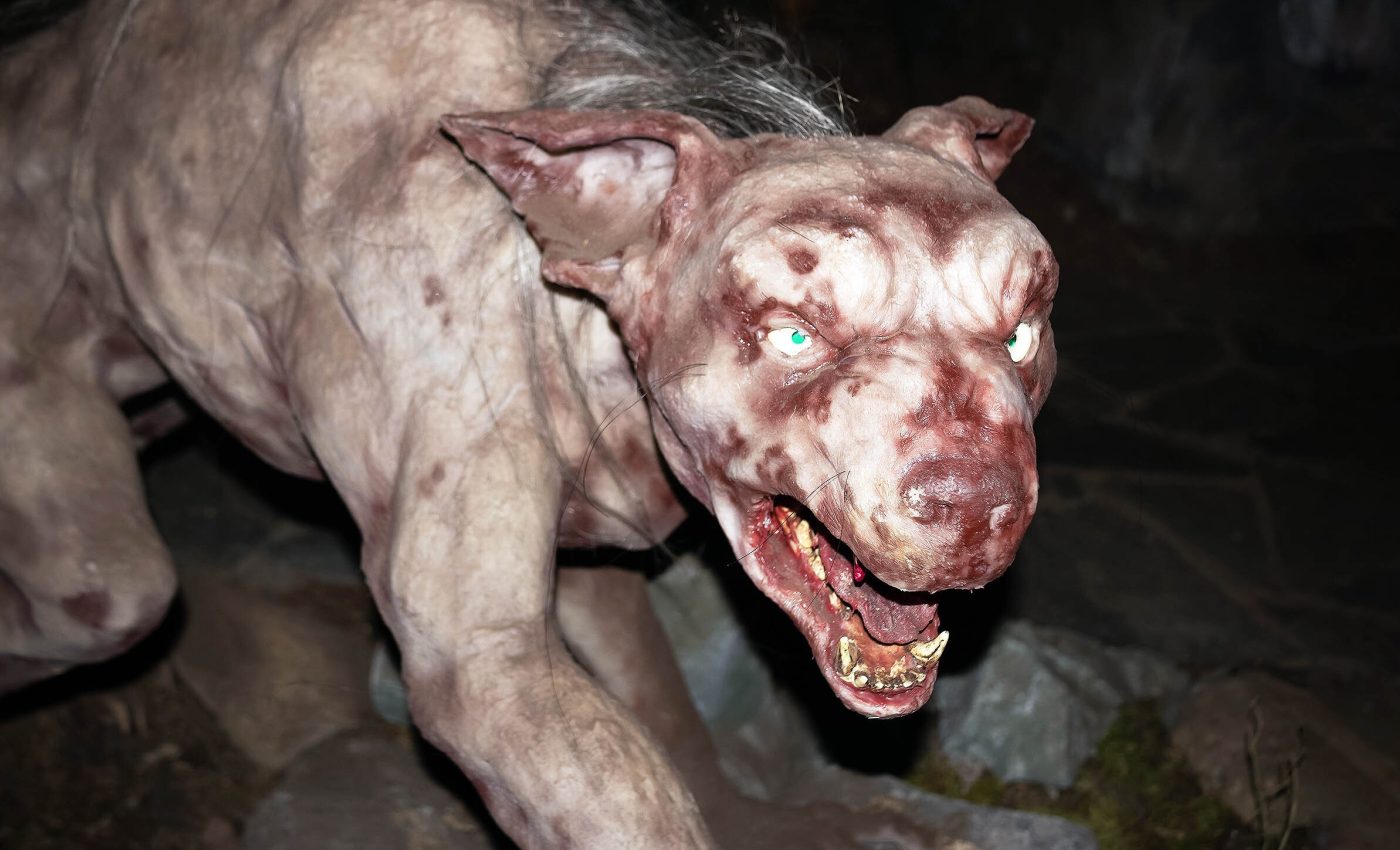
Spooky stories of the blood-sucking chupacabra: Fact or fiction?
The mythical chupacabra, with its gray, scaly skin, protruding spines, and fangs, has intrigued and frightened communities across the Americas for decades. Known for allegedly preying on small livestock, this monster has spawned numerous legends and origin stories.
However, according to John Tomeček, a wildlife expert from Texas A&M AgriLife Research, the real explanation for these sightings is rooted in science, not the supernatural.
Scientific explanation for chupacabra sightings
Tomeček, an associate professor in the Department of Rangeland, Wildlife, and Fisheries Management at Texas A&M, suggests that many reported sightings of the chupacabra are actually cases of coyotes suffering from advanced stages of mange.
“Mange is a debilitating disease that can infect a wide range of fur-bearing mammals,” explained Tomeček.
The disease, caused by microscopic mites that burrow into the skin, leads to intense irritation, fur loss, scabbing, and thickening of the skin.
Tomeček notes that as mange progresses, it follows a particular pattern on the animal’s body.
“On canids, the last place they lose fur is right between the shoulder blades in an area that we call the ruff,” he said. This pattern can create the appearance of spines or ridges, aligning with descriptions of the chupacabra.
The extreme emaciation and weakened state of mange-infested animals further contribute to their eerie, otherworldly appearance, especially when seen in the dim light of dawn or dusk.
Behavioral changes in sick wildlife
The advanced stages of mange not only alter the appearance of animals but also change their behavior, making them more desperate and bold in their search for food. This desperation can lead to encounters with humans and livestock that would typically be avoided.
“When you have a coyote that is in late-stage mange, they are bolder as far as approaching residential areas to find food because they are desperate,” Tomeček explained. “They’re taking risks that an otherwise healthy animal wouldn’t take.”
The legend of the chupacabra, which translates to “goat sucker” from Spanish, originated in Puerto Rico, where reports of livestock deaths with drained blood first emerged.
Tomeček suggests that these behaviors align with those of a sick predator. Infected animals may target small, confined livestock that are easier to catch than wild prey, which tend to be more agile and alert.
The characteristic puncture wounds often found on these animals also correspond to the predation style of coyotes.
“Coyotes’ mouths are not good at getting and maintaining a grip, so they have to re-bite,” Tomeček noted, which can result in puncture wounds that lead to significant blood loss.
Misinterpreting the signs of predation
Tomeček also addressed the myth that chupacabras completely drain their prey of blood. He explained that this perception might stem from a misunderstanding of how blood settles and coagulates in a dead animal, creating the appearance of an empty circulatory system.
While sick animals may be more likely to venture into human areas, Tomeček stressed that their increased boldness does not necessarily mean aggression.
“I always make the distinction between an animal being bold and an animal being aggressive,” he said. “Being bold just means an animal is taking risks and doing things that they normally wouldn’t because they’re desperate.”
Encounters with mange-infected wildlife
Given that mange can be transmitted to both humans and domestic animals, Tomeček advises caution when encountering infected wildlife.
He recommends securing pets and contacting local wildlife officials, such as county wildlife biologists with the Texas Parks and Wildlife Department, rather than approaching the animal directly.
Tomeček also highlighted the importance of ensuring that the animal in question is not a domestic pet suffering from mange before considering any action.
“There are no known preventative measures for mange, but if you live in a region where the disease is common, it would be wise to consider a regular bathing regime for your working and companion animals that includes some sort of acaricide treatment,” he advised, urging pet owners to seek appropriate veterinary care when necessary.
Beyond the myth of the chupacabra
While the folklore of the chupacabra can capture the imagination, Tomeček emphasizes the need to focus on the scientific reality behind these sightings.
“When dealing with a ‘chupacabra,’ we are dealing with a real animal – typically a coyote – that’s experiencing a serious health problem,” he said. “Treat the situation accordingly so we can help steward our wildlife resources.”
By shedding light on the science behind the chupacabra phenomenon, Tomeček hopes to encourage a better understanding of wildlife health issues like mange and promote responsible management of the animals that share our ecosystems.
—–
Like what you read? Subscribe to our newsletter for engaging articles, exclusive content, and the latest updates.
Check us out on EarthSnap, a free app brought to you by Eric Ralls and Earth.com.
—–













